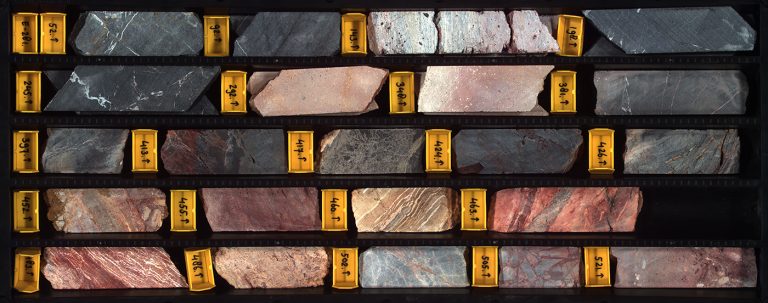Infrared scanning reveals whether a piece of rock is likely to contain gold or not. This technique may make gold mining more efficient.
Doe mij maar Nederlands
Industrial gold mining is like searching for a needle in a haystack. One tonne of ore typically contains one gram of gold, which is one part per million. To recover it, rock from the mine is broken and pulverised into powder. Next, cyanide acid is added to dissolve the gold from the stone. Siphoning off the acid and passing it over carbon makes the dissolved gold stick to the surface and presto! They hit gold. Dr Marinus Dalm has seen the process near a Peruvian goldmine that he visited for his research. He recently defended his thesis called Sensor-based sorting opportunities for hydrothermal ore deposits (2 November 2018).
The gold industry approached the TU Delft resource engineering group (Faculty of Civil Engineering and Geosciences) to see if scanning would make the gold-mining process more efficient and less polluting. More than 200 tonnes of rock go through the mill every hour. If a scanner could identify gold-free rocks and sidetrack them before processing, it would make the cumbersome process more efficient.
Gold on the rocks
“Directly scanning for gold doesn’t work because of the low gold content,” says Dr Marinus Dalm. Instead, he uses infrared spectra to determine the type of rock under the scanner. The thing is, when gold is being formed, the violent hydrothermal process also changes the chemistry of the adjacent rock. Imagine gold dissolved in water under high pressure and temperatures emerging from a magma stream. All of a sudden, the water may shoot up through a crack in the rocks. The pressure drops and the water starts boiling. That’s the point when hydrothermal changes take place and gold will be deposited on the surrounding rock.
Geologists know the kinds of rock that are proxies to gold: pyrite, alunite and rutile to name a few. These minerals have specific infrared absorption profiles that identify them as associated with gold deposits. Without the right fingerprint, a rock probably contains no gold and should be discarded.


A test using infrared identification of over 800 samples from the Lagunas Norte goldmine in Peru showed that 16% could be rejected. Although that leaves 84% of the material needing to be processed, Dalm argues in his thesis that ‘there is potential that removing this waste with sensor-based sorting can provide economic benefits’.
More scanning
Dalm recommends combining infrared scanners with visual scanners to make the identification more specific. White quartz from the Cortez mine (Nevada) for example contains no gold because it was formed after the gold deposits. This sort of selection obviously requires profound local geological knowledge.
Whether or not scanning sorters will be used in processing plants depends on the cost-benefit analysis. Does the reduction in processing costs justify the investment in a scanning sorter?
After his thesis defence, Dalm joined the Spectral Industries start-up that commercialises laser-induced breakdown spectroscopy (LIBS). The instrument was originally developed for analysing samples on Mars, but it may prove useful on Earth as well.
Short animation on the scanning of gold ore by MegaMoniek
- All you might want to know about GOLD


From: Number Sleuth
Do you have a question or comment about this article?
j.w.wassink@tudelft.nl


Comments are closed.